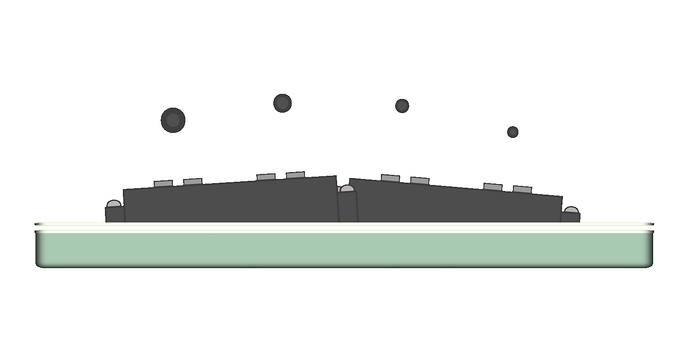@Jazzbass19 has got it right, adjust the action and pickup height to what feels and sounds best to you .
Setting pickup height is a matter of personal taste and is effected by a lot of factors… the pickup, (type of pickup, strength of magnets, number of windings), the strings (gauge, winding type, materials used), the radius of your fretboard, how you play (fingers, pick, slap, hard, soft)…
Some things to keep in mind:
-
Pickup closer to strings: More volume, more treble, less sustain (more noticeable on neck than bridge pickups).
-
Pickup farther from strings: Less volume, less treble, more sustain.
-
When setting pickup height on instruments with more than one pickup, you usually want the volume of the pickups to match (but again this is personal preference). Start with the bridge pickup. Set the height fairly close (2-3mm) and adjust up or down until you have the tone you like (it should be pretty treble-y, it’s a bridge pickup), the strings aren’t hitting the pickup when you play hard and the volume difference between each string isn’t too great.
-
For neck pickups, start with them about twice as far away as the bridge pickup you just set up. Raise or lower the neck pickup until you match the volume of the bridge pickup. If the strings don’t hit the pickup when you play hard and you are satisfied with the sustain and tone (which should be bass-y and quite distinct from the bridge pickup tone) then you are done.
-
Be prepared to make compromises, you might have to go back and forth adjusting the pickups several times to get an acceptable balance between volume, tone and playability.
-
P-bass pickups: These are designed to match the radius of your fretboard and make it easy to adjust the volume/tone of each string to match the others. Many guitar techs don’t know this (because there isn’t an equivalent pickup for guitar) and rarely will you see a new bass in a store with a p-bass pickup properly set up, they are usually flat.
If your foam has broken down and no longer holds up your pickups, consider adding springs to the shafts of the pickup screws. I assume foam was used, in part, to reduce microphonic feedback but probably mainly to cut costs. Springs will last pretty much forever though.
